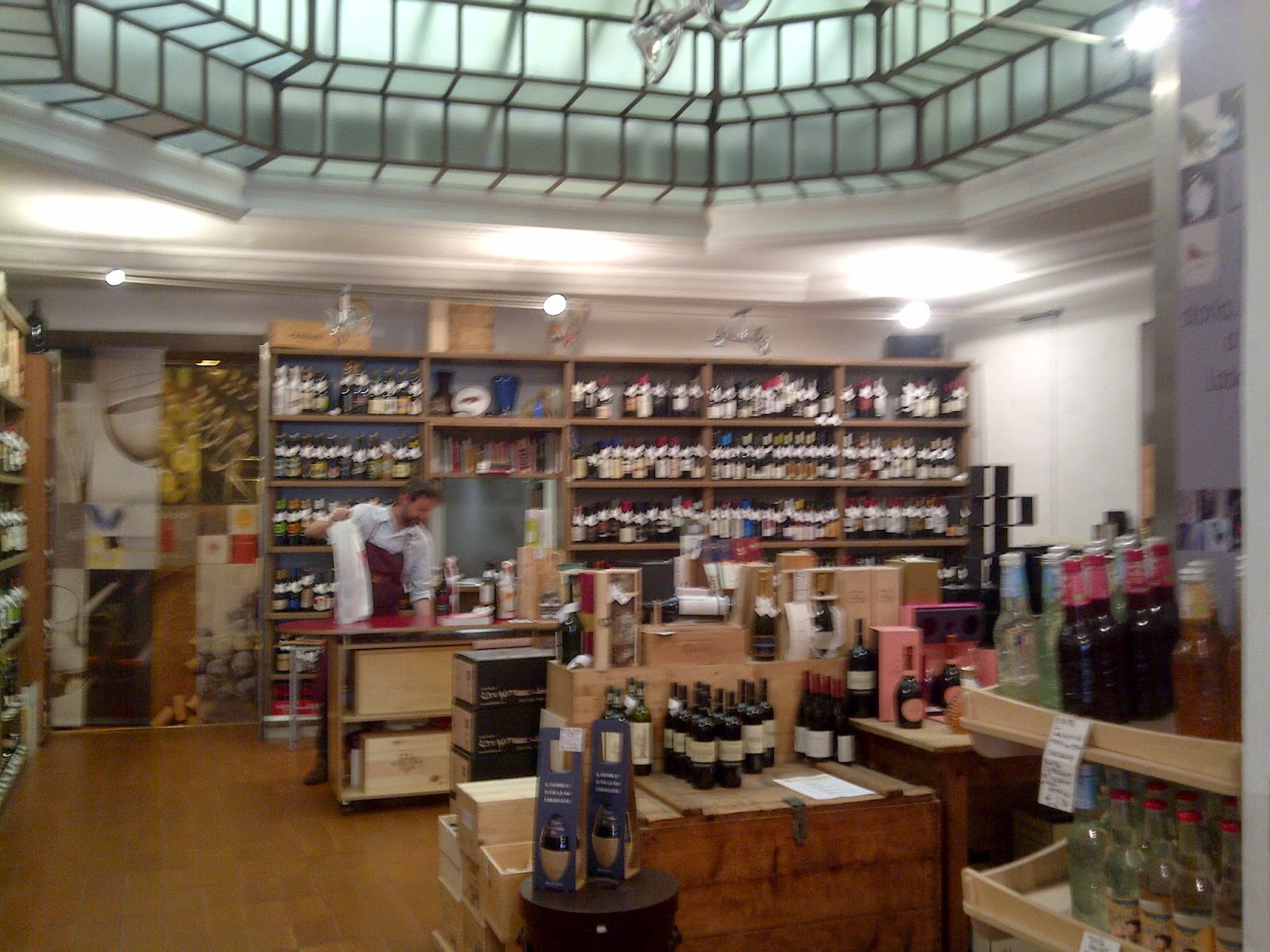We have been aware of the variety Solaris (first launched in Freiburg in 1975) for a while now: we even planted a few Solaris vines ourselves and have seen the first small sweet berries this year. It is a very obliging variety - basically you just have to prune it and it produces vigorous cane and leaf growth in the most unpromising sites. It is even grown in Denmark, Sweden and even Norway .The wine has the reputation of being rather sweet. It's forebears are complicated indeed. Some of them are hybrid (Seyve Villard, Zarya Severna) but plenty are not (Riesling, Pinot Gris, Muscat Ottonel) so it has crept into the Vinifera classifiction under the wire so to speak, despite a couple of skeletons in the cupboard and was legalized in Italy in 2011.
 |
| An English Solaris seen at the 2014 London Wine Fair |
We are not on hand to tend our vines at all times so varieties that need spraying against typical diseases such as Powdery and Downy Mildew are a problem, especially in a place like England where if truth be told, a very great deal of chemical assistance is necessary for any but the most resistant varieties.
Solaris is only one of these. Others include Sirius, Helios, Orion, Phoenix and Johanniter for the whites and Regent and Rondo for the reds - and that is just in our little experimental vineyard.
So it was with some surprise this summer to discover several Italian wines from the Trentino made from Solaris in purezza. As if the Italians don't have enough grape varieties of their own! Well, the reason seems to be a new attempt to combine the purity of organic farming with producing a dependable crop. The hardworking organic/biological/bio-dynamic producers still have to spray (they use natural tisanes and suchlike) and are quite used to losing sizable portions of their production to diseases.
Here they seem to cottoned on to the idea that they can have it all with minimum effort and market the results positively as 'No-spray' wines.
At Enoteca Valsugana near Trento there were two Solaris wines, one by the well known local producer Pojer e Sandri called Zero Infinito. Here is how Pojer e Sandri trailed this wine before launching their first vintage last year (could that scentence beginning "ZERO "DERIVA" be an attempt to allay possible fears about Solaris being a GM crop?);
Quindi ZERO fungicidi e ZERO insetticidi contro la tignola dell’uva. ZERO “DERIVA” in quanto il vigneto è inserito e protetto da un bosco di 50 ettari in montagna a 800 – 900 m s.l. mare, un “salvagente” che fa da barriera ad eventuali trattamenti fatti dai confinanti. La stessa vinificazione non prevede alcun intervento chimico esterno: ZERO solforosa, ZERO lieviti commerciali liofilizzati, ZERO chiarificanti, ZERO filtrazioni, ZERO antiossidanti (il lievito indigeno diventa l’antiossidante naturale del vino). Una tecnica ancestrale per arrivare ad un vino bianco frizzante, naturale, col fondo, a ZERO impatto chimico.
The other was by Santa Colomba who advertise this as
Solaris SANTACOLOMBA "Più forte della Magia" Varietà resistente alle malattie della vite
This was starting to look like the Philosopher's Stone of wine, so when we came across yet another example, this time by Pravis (Slotovino's Vigneron of the year 2010/11) we bough the bottle. Strangely enough, Pravis's website doesn't mention this wine yet but a merchant who carries it continues with the general tenor of praise for the miracle Solaris grape;
Il solaris è una varietà nuova, ancora non molto diffusa in Italia, che si caratterizza per la naturale resistenza ad alcune delle più diffuse malattie della vite. Si tratta infatti di una pianta creata in laboratorio capace di resistere a peronospera e oidio, che permette così all’uomo di eliminare del tutto qualsiasi tipo di intervento chimico, in vigna. Quello che ne deriva è un vino bianco fresco e piacevole, di gran beva.
The proof of the pudding? It didn't appeal to the discriminating Mrs Slotovino, nor to friends who might have erred on the side of politeness. By chance at the same meal we had opened a bottle of rather mean Trentino Mueller Thurgau (which can be good by the way) and so by putting both disappointments together, produced something quite acceptable. Home blending doesn't often work but this time it did (try 50/50 if you ever find yourself in the same predicament).
The English Solaris was better than the Italian one for the obvious reason that it had more acidity but the question remained as to why the Italians have alighted on this particular disease-resistant variety to the exclusion of so many other more promising ones. We even heard from our friend Giuseppe Ferrua of Fabbrica San Martino in the Colli Lucchese that someone had suggested Solaris to him as a Demeter accredited producer. Perhaps when the Italian Government add some of the other new No-spray varieties to their list of permitted grapes the scene will change? There are so many more promising varieties than Solaris in our view.
This year Italy and the UK swapped summer weather with Italy with us basking in veritable Mediterranean sunshine while Italy has suffered such a miserable season that production is down 30% with places such as Puglia and Sicilia especially hard hit. Those who have planted Solaris will be thanking their lucky stars.






































